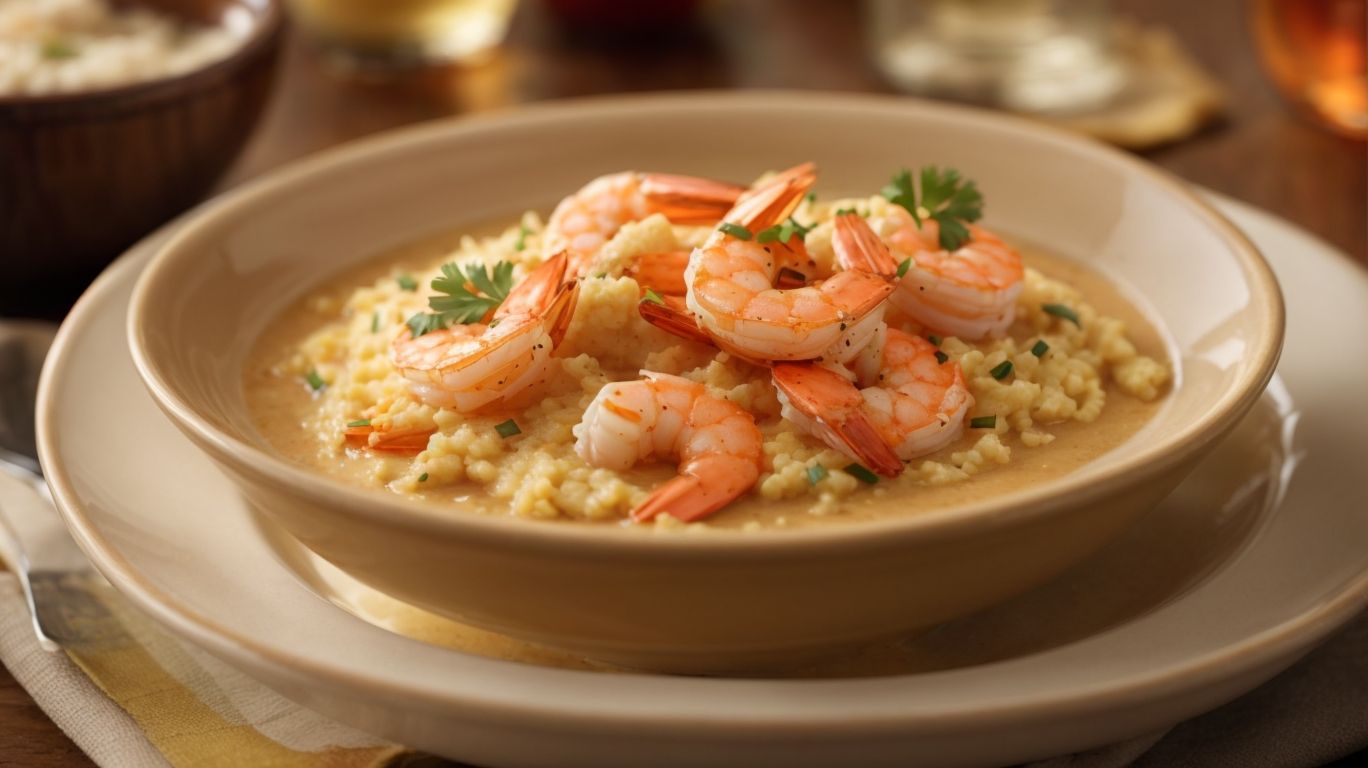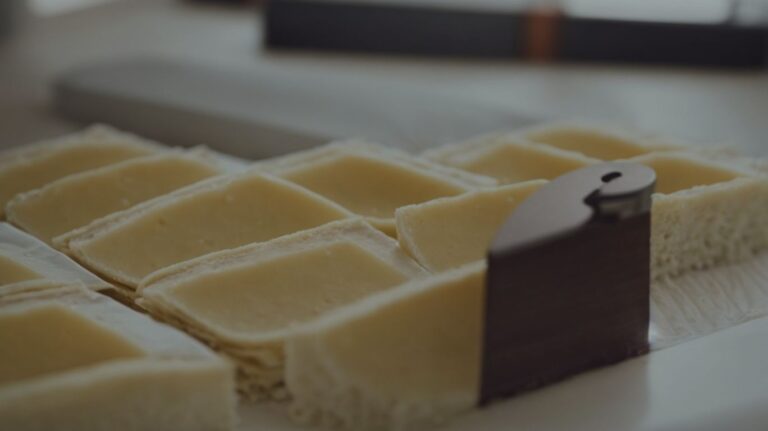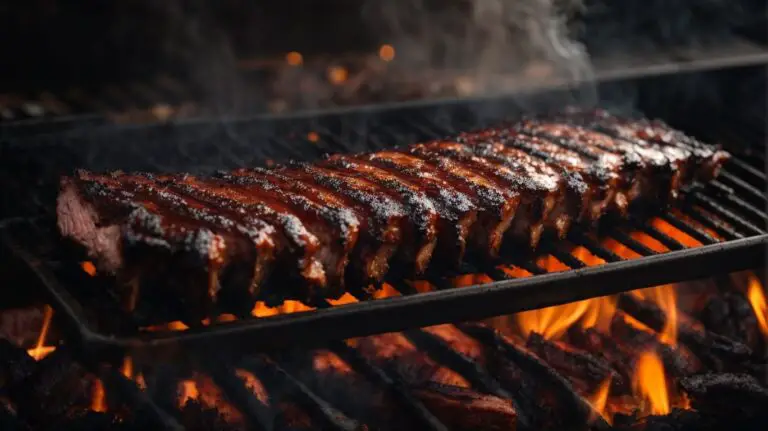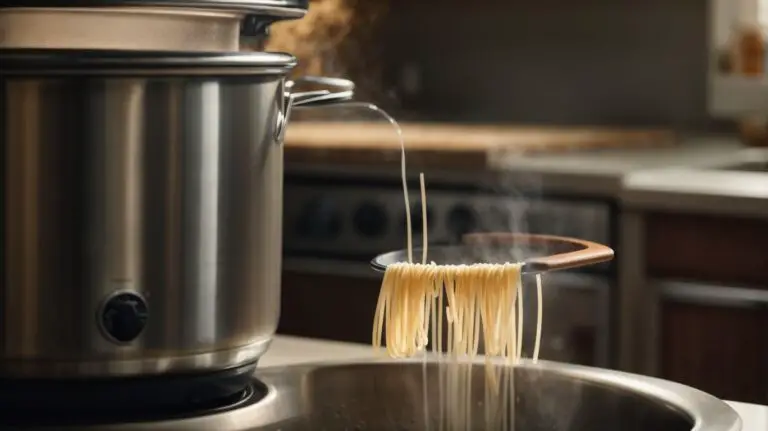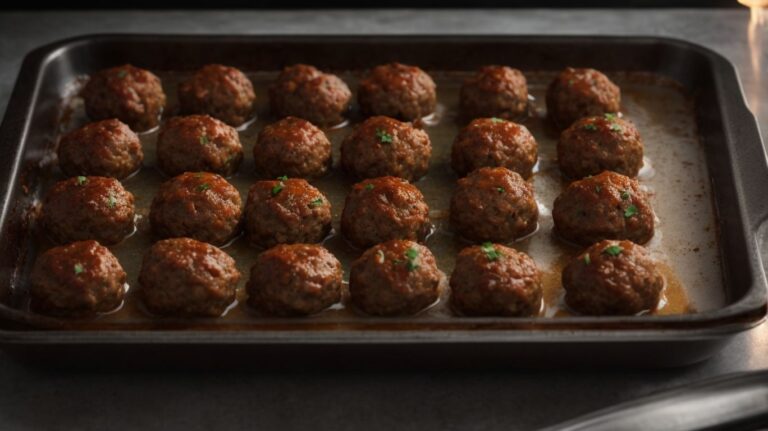How to Cook Grits for Shrimp and Grits?
If you’ve ever wondered what exactly grits are and how they come together with shrimp in the popular dish known as Shrimp and Grits, you’re in the right place.
We will explore the key ingredients needed for this savory Southern dish, how to cook the grits to perfection, and the steps to prepare the shrimp just right.
Discover tips and tricks on achieving the perfect balance of flavors in this classic comfort food.
Key Takeaways:
What Are Grits?
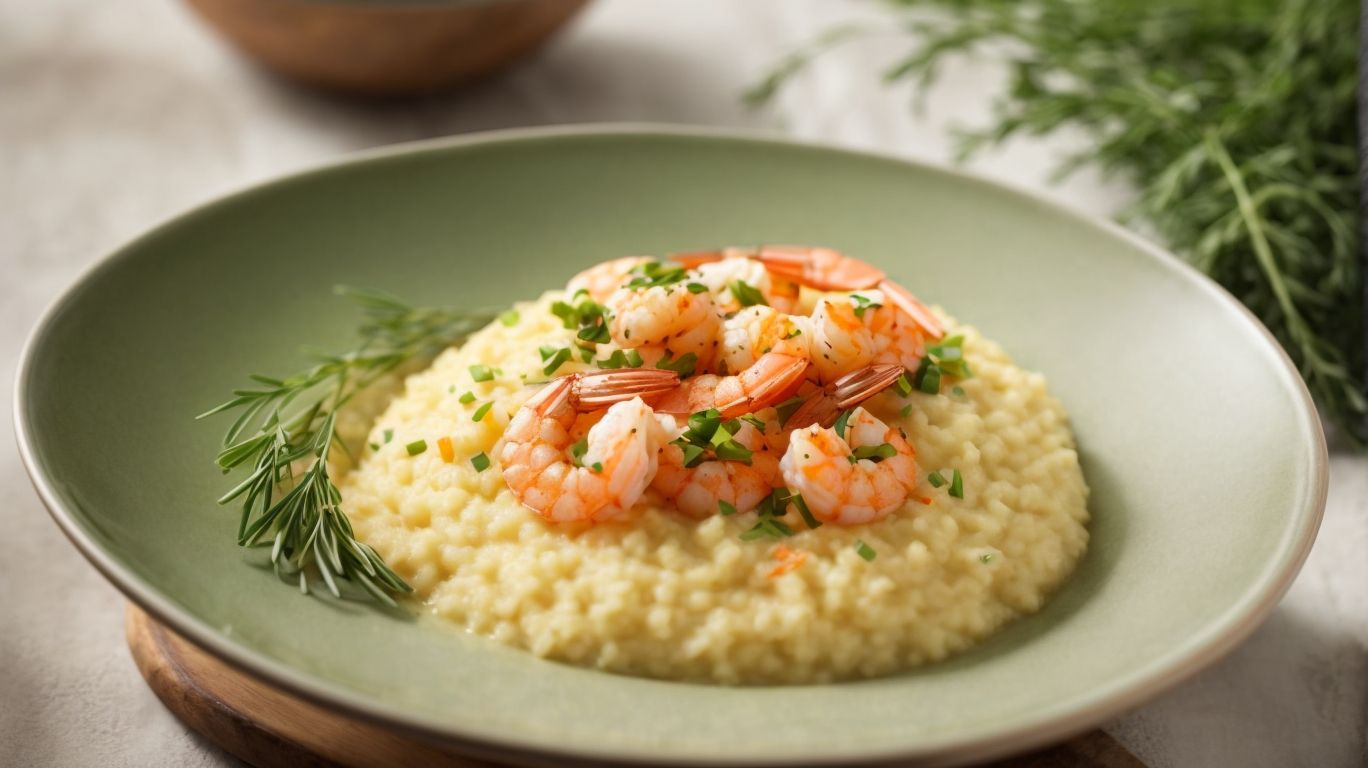
Credits: Poormet.Com – William Smith
Grits are a quintessential Southern staple made from stone-ground corn, known for their versatility and comforting texture.
In Southern cuisine, grits play a central role in traditional meals, offering a hearty base for dishes ranging from breakfast to dinner. The process of making stone-ground grits involves grinding whole dried corn kernels between stone wheels, resulting in a coarser texture and richer flavor compared to instant varieties. To prepare stone-ground grits, one typically boils them in water or milk, stirring constantly until they thicken to a creamy consistency.
What Are Shrimp and Grits?
Shrimp and grits is a beloved Southern dish known for its flavorful combination of shrimp, creamy grits, and savory ingredients.
The origins of shrimp and grits can be traced back to the Lowcountry region of the Southern United States, where this dish has deep roots in the culinary traditions of African, Native American, and European influences. The combination of fresh shrimp, stone-ground grits, and a richly seasoned sauce creates a unique flavor profile that is both comforting and satisfying.
When preparing a traditional shrimp and grits recipe, the key lies in properly cooking the shrimp until they are just cooked through and perfectly seasoned to complement the creamy texture of the grits. The dish can be customized with additional ingredients such as bacon, mushrooms, or spices, adding layers of complexity to the overall flavor.
What Ingredients Do You Need for Shrimp and Grits?
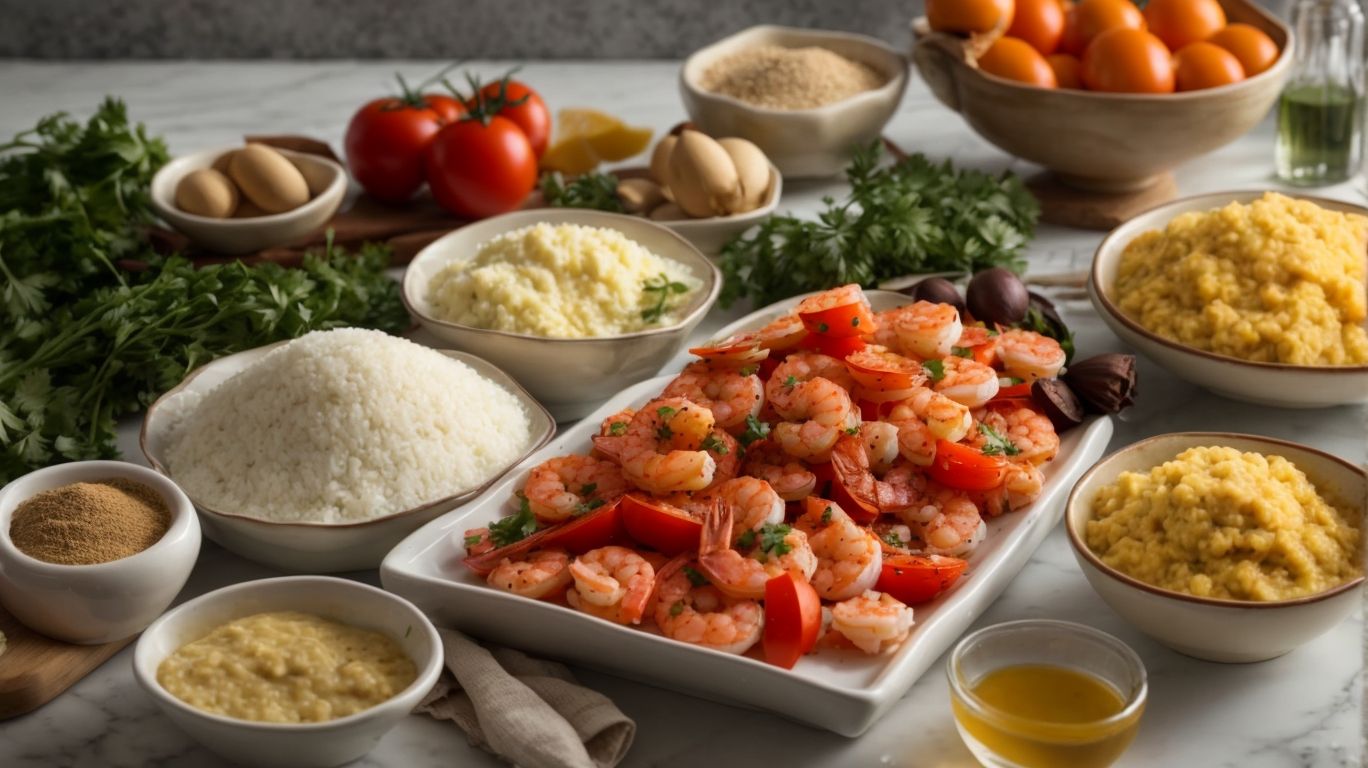
Credits: Poormet.Com – Matthew Martin
To prepare a delectable shrimp and grits dish, you’ll need fresh shrimp, stone-ground grits, crispy bacon, rich cheese, savory butter, flavorful sauce, chicken broth, and traditional Southern seasonings like salt and pepper.
Starting with fresh shrimp, they are the star ingredient of this classic Southern recipe, providing a burst of succulent seafood flavor. The stone-ground grits add a comforting and creamy texture, perfectly complementing the tender shrimp. Crispy bacon adds a delicious crunch and an extra layer of savoriness. Rich cheese melts into the dish, creating a creamy and gooey consistency that ties all the flavors together.
The savory butter adds a luxurious richness to the dish, enhancing its overall depth of flavor. The flavorful sauce infuses the shrimp and grits with an extra punch of taste, elevating the dish to a whole new level of deliciousness. Chicken broth serves as the base, providing moisture and a savory undertone. Traditional Southern seasonings like salt and pepper bring a perfect balance, enhancing the natural flavors of each component.
Grits
In terms of preparing the grits for your shrimp and grits recipe, opt for stone-ground grits for their creamy texture and rich flavor, complemented by a touch of butter for added decadence.
Stone-ground grits play a crucial role in delivering an authentic Southern flavor to your dish. The traditional milling process of stone-ground grits retains the natural corn flavor and ensures a coarser texture, resulting in a more robust taste experience.
Butter, on the other hand, contributes to the creaminess of the grits, elevating their richness and adding a velvety smoothness to the overall dish. The combination of stone-ground grits and butter creates a harmonious blend of flavors and textures that is essential for a truly satisfying shrimp and grits meal.
When cooking grits, the desired texture should be creamy yet slightly grainy, with a thick consistency that holds up well against the juicy shrimp and flavorful sauce. Achieving this balance is key to enhancing the overall taste and mouthfeel of the dish, showcasing the harmonious interplay between the underlying texture of the grits and the succulent shrimp topping.
Shrimp
Selecting the finest jumbo shrimp is crucial for your shrimp and grits masterpiece, ensuring proper cleaning, marinating, and cooking techniques to elevate the dish’s succulent flavors.
When selecting jumbo shrimp, opt for fresh, firm shrimp with a slightly translucent appearance, avoiding any with a fishy odor or slimy texture, as these may indicate spoilage. To prepare the shrimp, start by peeling and deveining them, running a knife along the back to remove the black vein. Once clean, marinate them with a blend of minced garlic, lemon juice, olive oil, and fresh herbs for added depth of flavor.
In terms of cooking, consider grilling the marinated shrimp for a smoky char that enhances the natural sweetness of the seafood, or pan-searing them in a hot skillet for a crispy exterior. Alternatively, bake the shrimp in a flavorful sauce to infuse them with additional aromatics. Whichever method you choose, watch closely as shrimp cook quickly and can become tough if overdone.
Vegetables and Seasonings
Incorporating crispy bacon and fresh green onions into your shrimp and grits dish adds layers of flavor and texture, enhancing the meal with a delightful combination of savory elements and aromatic seasonings.
In terms of flavor, seasoning plays a crucial role in bringing out the best in each ingredient. For shrimp and grits, consider using a blend of spices like paprika, garlic powder, and a touch of cayenne pepper for that extra kick.
Furthermore, balancing flavors is essential to create a harmonious dish. The saltiness of the bacon complements the freshness of green onions, while the seasoning blend ties everything together, resulting in a well-rounded and satisfying culinary experience.
How to Prepare the Grits?
Preparing the perfect creamy grits for your shrimp and grits dish involves a delicate balance of technique and patience, whisking the mixture to achieve a smooth and luxurious texture.
Start by combining water or broth in a pot and bringing it to a boil. Gradually add the grits while whisking constantly to prevent lumps from forming. Reduce the heat and let the grits simmer, stirring occasionally. This slow cooking process allows the grits to soften and absorb the liquid, developing a rich and creamy consistency. Be attentive to the thickness of the mixture; add more liquid for a thinner consistency or continue cooking for a thicker texture according to your preference.
Choosing the Right Grits
When selecting the ideal grits for your shrimp and grits recipe, opt for yellow grits known for their traditional appeal and distinctive texture that adds depth to the dish.
Yellow grits stand out not only for their vibrant color but also for their rich flavor and creamy consistency. They are made from whole dried corn kernels that are stone-ground, resulting in a slightly coarser texture compared to white grits.
The unique texture of yellow grits adds a delightful contrast to the tender shrimp in the dish, creating a satisfying mouthfeel that elevates the overall dining experience. What makes yellow grits even more special is their deep-rooted history in traditional Southern cuisine, where they have been a staple for generations.
Preparing the Grits
Cooking the grits to perfection requires a careful balance of heat and timing, ensuring thorough cooking while preserving the nutritional value and integrity of the dish.
In terms of managing the heat for grits, start by bringing the water or broth to a gentle simmer before adding the grits gradually, stirring constantly to avoid clumps. Maintaining a steady low to medium heat is crucial to prevent scorching and ensure even cooking.
For those looking to maximize the nutrition in their grits, consider using whole grain grits which are less processed and retain more fiber and nutrients compared to instant varieties. Incorporating a mix of dairy or non-dairy milk can boost the calcium and protein content without compromising flavor.
Adding Flavor to the Grits
Enhancing the flavor profile of your grits involves incorporating rich sauces, flavorful cheeses, and aromatic seasonings to create a decadent accompaniment to the shrimp in your dish.
For a creamy and luscious option, consider melting some sharp cheddar cheese into your grits and topping them off with a drizzle of sriracha for a hint of heat.
If you prefer a more traditional approach, a classic combination of butter, garlic, and Parmesan cheese can add a savory depth that complements the earthy tones of the grits perfectly.
Experimenting with herbs like thyme, rosemary, or smoked paprika can impart a nuanced flavor profile that elevates the overall taste of the dish.
How to Cook the Shrimp?
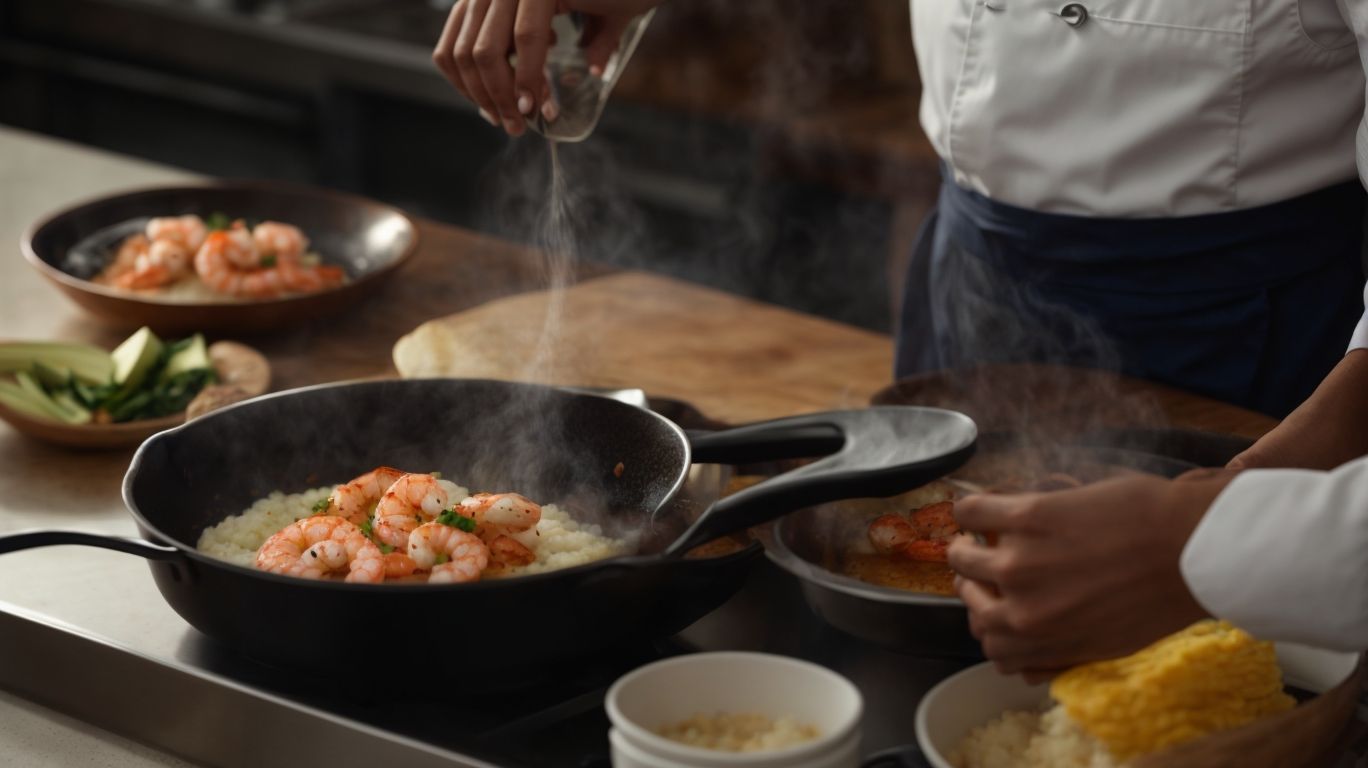
Credits: Poormet.Com – Gregory Williams
Cooking the shrimp for your shrimp and grits requires a skilled hand and a hot skillet, mastering the art of sautéing to achieve perfectly cooked and flavorful crustaceans.
When preparing shrimp in a skillet, ensure that it is adequately heated before adding oil to prevent the shrimp from sticking. Toss in the seasoned shrimp, ensuring they are evenly spread to cook uniformly. Utilize a gentle stirring motion to ensure all sides are seared evenly.
- It’s crucial to not overcrowd the skillet, as this may lead to steaming rather than sautéing, affecting the texture.
- For a delightful flavor, consider incorporating garlic, butter, and a splash of lemon juice during the sautéing process.
Cleaning and Preparing the Shrimp
Before cooking the shrimp, meticulous cleaning and preparation are essential steps to ensure a delicious final dish, streamlining the cooking process and enhancing meal prep efficiency.
-
First, start by rinsing the shrimp under cold water to remove any lingering dirt or debris. Pat them dry using a paper towel to ensure they cook evenly and develop a desirable texture.
-
Next, carefully peel off the shell, starting from the top of the shrimp down to the tail, and devein them if necessary. Removing the digestive tract not only improves the appearance of the dish but also enhances its taste.
-
For added flavor, consider marinating the shrimp with herbs, spices, and a splash of citrus juice before cooking. This step can significantly elevate the overall taste profile of your dish.
Marinating the Shrimp
Marinating the shrimp in a flavorful blend of lemon juice and black pepper infuses the crustaceans with zesty notes and a hint of spice, elevating the overall taste profile of the dish.
Allowing the shrimp to sit in this citrusy and aromatic marinade for at least 30 minutes not only tenderizes the seafood but also helps in locking in moisture, ensuring each bite is juicy and bursting with flavor. The acidity of the lemon juice works wonders in breaking down the proteins in the shrimp, resulting in a more tender texture. The black pepper adds a subtle kick that complements the natural sweetness of the shrimp, creating a harmonious balance of flavors.
Cooking the Shrimp
Cooking the shrimp over medium heat is key to achieving a perfect sear and ensuring that the crustaceans are cooked to succulent perfection, ideal for pairing with flavorful side dishes.
When cooking shrimp over medium heat, the gentle cooking process allows the natural flavors to intensify without risking a tough texture. To prepare the shrimp, start by deveining them for cleaner presentation and season them generously with your favorite spices or herbs. Properly thawed shrimp ensures even cooking and a juicy bite. When it’s time to cook, place them in a preheated pan and let them sizzle gently until they turn opaque and develop a golden sear. Pair these succulent shrimp with fresh salads, garlic butter noodles, or grilled vegetables for a well-rounded meal.
How to Assemble and Serve Shrimp and Grits?
Assembling and serving shrimp and grits involves artfully plating the creamy grits, arranging the cooked shrimp and vegetables, and garnishing the dish with a final touch of freshness and color.
When plating the dish, start by placing a generous scoop of creamy grits as the base, using a spoon to create a smooth surface for the toppings. Next, delicately position the juicy cooked shrimp on top of the grits, ensuring an even distribution across the plate. Arrange the sautéed vegetables around the shrimp in an aesthetically pleasing manner, adding color and texture to the presentation. For garnishing, consider sprinkling fresh herbs like chopped parsley or chives over the dish to enhance both the visual appeal and flavor profile.
Plating the Grits
Plating the creamy grits in an elegant fashion sets the stage for the shrimp and vegetables to take center stage in the skillet, creating a visually appealing presentation that enhances the dining experience.
When plating the creamy grits, consider using a spoon or ice cream scoop to create a smooth, rounded mound in the center of the plate. This will serve as the base for arranging the shrimp and vegetables around it. For the skillet, strategically place the shrimp on top of the grits, allowing them to be the focal point of the dish. Surround the shrimp with a colorful array of sautéed vegetables, such as bell peppers and cherry tomatoes, to add texture and vibrancy.
Adding the Shrimp and Vegetables
Incorporating the cooked shrimp and sautéed vegetables into the creamy grits requires careful preparation and a touch of heat to ensure that all components meld together harmoniously, creating a balanced and satisfying dish.
After cooking the shrimp in a hot skillet until pink and slightly caramelized, and sautéing the vegetables in olive oil with a sprinkle of salt and pepper to enhance their flavors, it is essential to fold them gently into the creamy grits.
The key to successful preparation lies in maintaining the integrity of each ingredient’s taste and texture while allowing them to blend cohesively.
To bring all the flavors together, consider reheating the mixture gently on low heat, stirring occasionally to prevent scorching, ensuring that the dish reaches a consistent temperature. This step further harmonizes the flavors and creates a delightful dish that is both comforting and flavorful.
Garnishing and Serving
The final touch of garnishing and serving your shrimp and grits masterpiece adds flair to the dish, enhancing the presentation and infusing additional flavors that elevate the overall dining experience.
Garnishing is not just about decoration; it plays a crucial role in tantalizing your taste buds. A sprinkle of fresh herbs like parsley or chives on top of your shrimp and grits can provide a burst of freshness and vibrant color. Consider adding a squeeze of lemon to brighten up the flavors or drizzling a savory sauce to add richness.
When serving, opt for elegant plating techniques like layering the dish artistically or using small edible flowers as the finishing touch. These small but impactful details can truly make your culinary creation stand out and delight your guests.
Tips and Tricks for Perfect Shrimp and Grits
For those seeking culinary excellence with shrimp and grits, expert tips and tricks can enhance the dish’s flavor, texture, and reheating methods to preserve the meal’s deliciousness for later enjoyment.
In terms of optimizing the flavor of your shrimp, consider marinating them in a blend of spices and herbs, or adding a splash of citrus for a zesty kick.
To elevate the texture, ensure not to overcook the shrimp, as they can become tough and rubbery; aim for a slightly translucent center for juicy perfection.
As for reheating, try gently sautéing the shrimp in a pan with a touch of butter or olive oil to maintain their tenderness and prevent them from drying out.
Choosing the Right Shrimp
Selecting the finest jumbo shrimp is crucial for your shrimp and grits masterpiece, ensuring proper cleaning, marinating, and cooking techniques to elevate the dish’s succulent flavors.
When choosing jumbo shrimp, opt for ones that are firm to the touch and have a slight sheen, indicating freshness. Begin by gently removing the shells and deveining the shrimp, ensuring not to over-handle them. For marinating, a simple mix of olive oil, garlic, lemon juice, and seasonings can work wonders.
In terms of cooking, grilling or pan-searing jumbo shrimp can bring out their natural sweetness and enhance their texture. Pay attention to the cooking time, as overcooking can leave the shrimp tough and rubbery. Whether you prefer a quick sauté with garlic and butter or a spicy Cajun twist, the key is to let the shrimp shine with minimal interference.
Adding Extra Flavor
Boosting the flavor profile of your shrimp and grits can be achieved by incorporating zesty seasonings like lemon juice, enhancing the dish’s texture and taste for a memorable culinary experience.
In terms of enhancing the flavor of shrimp and grits, the addition of lemon juice lends a tangy brightness that cuts through the richness of the dish. The acidity of the lemon juice not only amplifies the taste but also adds a refreshing element that complements the seafood and creamy grits perfectly.
The impact on texture cannot be overlooked. Lemon juice helps tenderize the shrimp, resulting in a more succulent and juicy bite. It also provides a slight acidic balance that prevents the dish from feeling heavy, creating a harmonious mouthfeel.
To make the most of lemon juice as a seasoning, consider drizzling it over the shrimp towards the end of cooking to preserve its fresh, vibrant flavor. Alternatively, mix it into a marinade or sauce to infuse the entire dish with its citrus notes.
Making Ahead and Reheating
Planning ahead with meal prep strategies for your shrimp and grits allows for convenient reheating options, ensuring that the dish retains its original flavors and textures when enjoyed at a later time.
In terms of meal prep, one of the key factors to keep in mind is proper storage techniques. Store the cooked shrimp and grits in airtight containers to prevent moisture loss and freezer burn. Labeling the containers with the date of preparation can also help you keep track of freshness.
For reheating, a gentle heat is crucial to prevent the shrimp from becoming rubbery. Whether you choose to reheat on the stovetop or in the microwave, adding a splash of broth or water can help revive the dish’s moisture content. This simple step can make a remarkable difference in the taste and texture of your meal.
Frequently Asked Questions
What ingredients do I need to cook shrimp and grits?
To cook shrimp and grits, you will need the following ingredients: grits, shrimp, butter, garlic, chicken broth, lemon juice, heavy cream, salt, pepper, and any additional seasonings you prefer.
How do I prepare the grits before cooking them with shrimp?
To prepare the grits, you will need to bring the chicken broth to a boil in a saucepan. Once boiling, gradually stir in the grits and reduce the heat to low. Let the grits simmer for about 20 minutes, stirring occasionally.
What type of shrimp should I use for this dish?
I recommend using fresh, wild-caught shrimp for the best flavor and texture. You can also use frozen shrimp, but make sure to thaw them before cooking.
Do I need to devein the shrimp before cooking?
It is recommended to devein the shrimp before cooking, as it can sometimes have a gritty texture. To devein, use a sharp knife to make a shallow cut along the back of the shrimp and remove the dark vein.
Can I add other ingredients to the shrimp and grits?
Absolutely! Some popular additions to shrimp and grits include bacon, sausage, and vegetables like bell peppers and onions. Feel free to get creative and add your own twist to this classic dish.
How do I know when the shrimp and grits are done cooking?
The shrimp should be pink and opaque when fully cooked and the grits should be thick and creamy. Taste and adjust seasoning as needed before serving.

